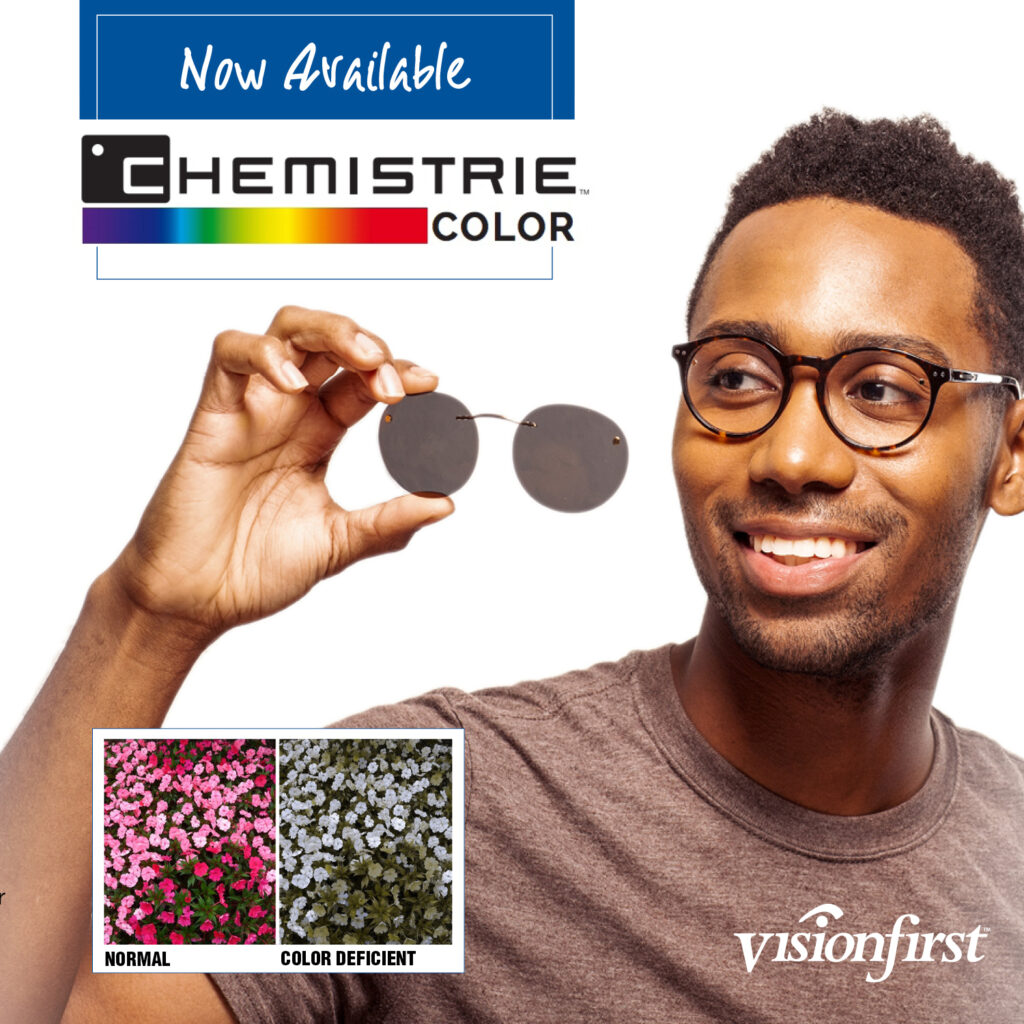
Treating color blindness: One lens at a time
Did you know everyone sees color a bit differently? You probably are so used to the way you see certain colors you may not even think about how it could be different from someone else. However, a color-blindness or color-deficiency diagnosis is common in one out of every 12 men.
This eye condition is typically genetic, inherited from one’s parents. While most have this condition from birth, sometimes it shows up later in life. Many don’t realize they have this condition or their need to be tested for it.
Currently, there is no cure for this condition, but there are treatments which we offer at VisionFirst.
Before sharing the ways we can help, we’d like to give you more info about color blindness and what to look for.
What is color blindness?
Color blindness or color deficiency is “an inability to see the difference between certain colors.” Most common is the difficulty in distinguishing shades of red and green, although there are a small number of people who can’t distinguish shades of blue and yellow.
Symptoms of color blindness/color deficiency could include the difficulty seeing:
- shades of red/green
- shades of blue/yellow
- the difference between colors
- the brightness of colors
Even in these symptoms there are varying degrees in how color blindness can affect your eyes. Monochromacy is when you don’t see colors and this type is very rare.
What causes color blindness?
Like we shared earlier, typically color blindness is genetic, but there are other causes that could influence the way your eyes respond to different wavelengths of light.
“Light, which contains all color wavelengths, enters your eye through the cornea and passes through the lens and transparent, jellylike tissue in your eye (vitreous humor) to wavelength-sensitive cells (cones) at the back of your eye in the macular area of the retina. The cones are sensitive to short (blue), medium (green) or long (red) wavelengths of light. Chemicals in the cones trigger a reaction and send the wavelength information through your optic nerve to your brain.
If your eyes are normal, you perceive color. But if your cones lack one or more wavelength-sensitive chemicals, you will be unable to distinguish the colors red, green or blue.”
Here are some other causes of color blindness:
- Diseases such as sickle-cell anemia, diabetes, macular degeneration, and Ahlzheimer’s (just to name a few) can cause color blindness in one or both eyes.
- Medications treating heart problems, infections, auto-immune diseases, or even nervous disorders.
- Aging
- Exposure to chemicals such as carbon disulfide and fertilizers.
Who is impacted by color blindness?
Statistically, men are more impacted by color blindness than women. However, sometimes those who are color blind are unaware of having this eye deficiency.
Maybe you’re reading this and wondering if you or someone you care about may be struggling with color blindness. The VisionFirst eye care expert team would be glad to talk with you about your eye concerns.
You can contact us to set up an appointment at any of our 15 locations in the Kentuckiana area.
Treatment for color blindness
Missing out on shades of red, green, blue, or even yellow doesn’t have to be permanent. With a simple change in glasses, color blindness can be felt as if it is obsolete.
Chemistrie Color has created a new lens technology that assists someone with color blindness/deficiency with their color perception. They offer both indoor and outdoor lenses and also with lenses that offer varying degrees of assistance.
We offer this option in eyewear at VisionFirst and would love to walk with you on this journey as you or someone you care about embraces the many beautiful colors in our world.
For further questions about your eye health or eye care. Contact us at VisionFirst. We’d be happy to answer your questions and hear your concerns.
